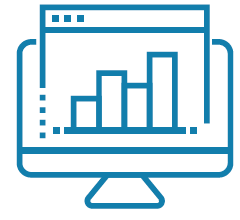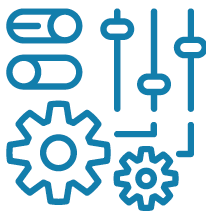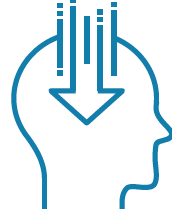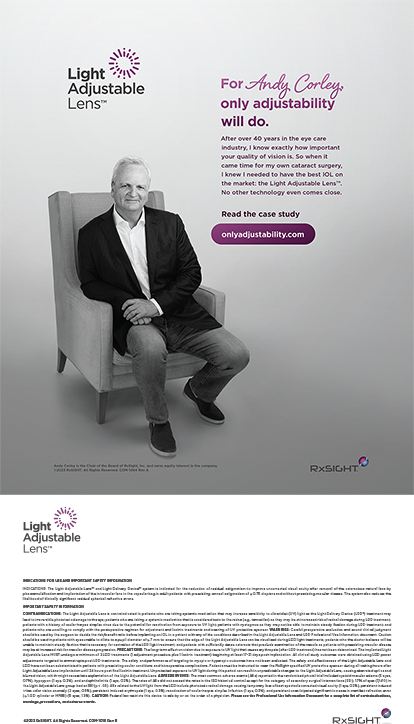Digitalization has substantially changed our personal lives during the past 20 years, but the field of cataract and refractive surgery is only now starting to experience the fundamental changes associated with the trend toward digital transformation. Driven by the information available to stakeholders in our industry and profession—patients, surgeons, manufacturers, regulators, and payers—these forces will fundamentally change our expectations, decisions, communications, and relations.
Will ophthalmology be ready to deal with these changes?
DIGITAL TRENDS OUTSIDE OF OPHTHALMOLOGY
With the introduction of new behaviors, needs, and sociocultural influences, we must adapt our clinical services to the patients of tomorrow. Following trends and bringing the bigger picture into view, our industry and profession can help to ensure that we consider global and societal changes while we seize new opportunities. People will continually redefine their values, either by moving from being consumers to being creators or by connecting with real people in a globalized world.
As changes happen quicker and complexity grows, we must adjust the ways we learn (eg, through virtual or augmented reality) and also navigate the use of the intelligent applications that will become essential parts of our lives. These adaptations will drive disruptive innovation and new business models, especially but not limited to the digital industry. We expect seamless interactions and instant responses in a world where all things, places, and people are connected on the backbone of high-speed digital infrastructure.
Digital ethics, regulatory requirements, openness, and transparency are already being incorporated into products, services, and interactions, and the ecosystem of the cloud is opening pathways for new modes of business and personalized services and medicine. These changes are associated with a continuously increased need for quality of life and health, infusing all areas of our lifestyle and work, as mindful consumption informs our choices.
As people adopt more value-driven approaches of living, balancing work and leisure becomes increasingly important and technology blends seamlessly into our lives, creating a hybrid world where digital intelligence enhances experiences for analog humans. Digital health innovations will enable truly personalized and mobile solutions, and they will optimize quality of life and health care and transform our attitude toward living well.
DISRUPTIVE POTENTIAL IN CATARACT AND REFRACTIVE SURGERY
Disruption requires changes, and predicting the reasons that might drive those changes is crucial in understanding potential disruptions in our field. First, we need to recognize that our field is already highly data-driven, creating opportunities for the use of artificial intelligence (AI) for clinician support; this is known as technology-clinician interaction.
One advantage in the field of cataract and refractive surgery is that many of the associated diagnostics and treatments use structured data, such as refraction, corneal topography, and visual acuity data. However, adding new devices and technologies in our day-to-day work is associated with a substantial increase in data and training effort, and it does not necessarily result in better information for making better clinical decisions.
Therefore, one major area in which we are going to see disruptive change is in the interaction of the surgeon-clinician with the technology—for example by using AI to help derive information from all possible available data in order to make decisions for each individual patient.
Today, clinicians often consult with one another via online communication in the forms of email, forums, and Whatsapp, to name a few. These online tools are efficient ways to solicit opinions from colleagues or mentors regarding patients for whom the available data might not reveal a clear pathway forward. It is obvious that this fundamental need of clinicians to discuss cases, treatment planning, and clinical results with their peers requires simplification in data exchange and communication.
Even though the use of telemedicine has been increasing in recent decades, we are just at the point at which this technology is established enough to be of practical daily use. Accessing a patient’s clinical data at all levels (eg, medical history, corneal topography, OCT, ocular biometry) in real time and discussing the case with colleagues via videoconference will become routine, but it may require new approaches and business models to collaborative care for our patients. However, technologies in our field still lack the fully exchangeable data that some other medical fields enjoy, such as computed tomography, and manufacturers tend to build isolated networks that limit connectivity and, therefore, the ability to exchange clinical knowhow.
Another area where change in perspective will take place is the interaction of the clinic and practitioner with the patient; this is known as patient-clinician interaction. Most electronic health records have historically been built as electronic patient files. In the near future, they will increasingly become more process- and customer-oriented business solutions. This is because of the need to connect social media marketing information, agenda and appointment software, resource planning, patient medical documentation, financials, and communication history through a customer relationship management (CRM) software solution. Starting from the first interaction of the patient with the clinic (eg, on social media), these new paradigms will simplify appointment scheduling by providing online tools that are linked with the clinic’s resource planning efforts. The new CRM systems will subsequently guide patients through the pathway of the clinic, finally leading to posttreatment support. Driving and supporting the patient in this way, throughout his or her experience with the clinic, will lead to increased efficiency and cost reductions.
Whereas our industry and profession are currently focused on technology-clinician interaction, there have been limited attempts to improve the direct interaction of the patient with technology—the technology-patient interaction. Especially in regard to screening, monitoring, and educating patients, new technologies will change the ways patients interact with technology to determine their current status of vision and vision needs.
As an example, we now typically make clinical decisions based on a single patient visit. Whereas this is straightforward in most cases, such as when clear clinical signs of a cataract are seen, in many cases additional visits are needed until a medical intervention is indicated, as for a patient with a progressive condition. Here, new technologies that would allow the patient to monitor his or her vision over time would provide more insights into the arc of progression.
Besides this, patients will have more resources to become educated about their situation, and this will allow them to make informed decisions. Patients might access diagnostic devices that can check their visual situation at new points of contact, like at home or at a supermarket, and direct them to the health care provider that is best able to support their vision needs.
The concept of patients directly interacting with technology is new to our field, and it has the potential to be disruptive because it might bypass or replace the health care provider, to some extent, while technology develops in that space. The short- or mid-term impacts of these developments in the next 2 to 5 years will probably remain small, but in the longer-term perspective they may be significant enough to change the focus of our industry from supporting the surgeon toward a new focus on solving individual patient needs.
TECHNICAL FRONTIERS AND LIMITATIONs
Aside from the general infrastructure required for data exchange, storage, and analysis, some general basic challenges that will soon be overcome will affect the way we use information in the coming years.

No. 1: The ability to harvest high-quality data about individuals, processes, and technologies. Even when we can gather a lot of data (or, in the modern term, big data), the integrity and quality of that data is essential. The general principle of “garbage in, garbage out,” or, in the German phrase, “wer misst misst mist” (he who is measuring, measures garbage), applies here. One needs to consider the quality and integrity of data, not just the quantity.
In a practical example, if your corneal topography device is miscalibrated, you likely will end up with wrong measurements of your patient’s cornea. Measuring that cornea 100 times with that device will not provide you more insight, as the fundamental data remain wrong.
Besides accuracy, we also must consider the signal-to-noise ratio in every measurement. Separating the noise from the good quality information within a data set is critical. Large data sets can help to achieve that separation, but if the noise is fundamentally related to the measurement, the good quality information might remain hidden in the noise. Additionally, outliers and missing data in a data set can also be a challenge, as they might affect the data processing in a later step.
Consequently, if we intend to process big data, we must consider adding a data-clearing step to ensure that the data provided for analysis are suitable and reliable.

No. 2: The use of data analysis (or, in the modern terms, AI and machine learning) to process the cleared data to extract useful information. Methods that are used for this purpose of statistical processing are typically decision trees, regression analyses, or neuronal networks. Practically speaking, these methods are not new, but the available data and the processing speed used to run such methods has reached phenomenal levels.
Training algorithms require a training data set to establish the model, a test data set to perform test procedures during the training, and a validation data set that remains unchanged to validate the developed algorithm for practical use. Typically, a given data set is split into these three separate groups before the training is applied so that a fundamental bias of such methods is avoided or minimized. As an example, if the data set consists mainly of a white population, the algorithms generated might have significant limitations for dealing with input data from other ethnic groups. This is a well-known problem in training security systems.
In medical devices or technologies, validation is a formal process to ensure that the particular technology delivers the intended benefits with minimal risks. A great promise of the digital health tsunami is that it will support clinicians to make better decisions or, in the long run, provide automated decision-making for specific indications without the involvement of a health care professional. This might sound attractive to some stakeholders, but it also raises questions about the validity of such support or decision systems. How do we assure that the data used to train, test, and validate does not create bias on a large scale? How do we avoid using patients as guinea pigs, as such algorithms will adapt iteratively to different responses to the medical treatments provided?
One solution may be the combination of different information sources. Whereas big data usually refers to data generated on a daily basis in real life (retrospective approach), data from prospective clinical trials can answer specific scientific questions, providing information gathered under controlled environments. Combining both worlds might resolve or minimize the issue of bias in both data sets. As an example, particular influencing factors that are shown to possibly affect the outcome of a treatment could be tested under clinical study conditions before being implemented into a decision algorithm.

No. 3: The translation of an output of an algorithm into practical information for making personal, clinical, technical, or business decisions. Data representation has become its own discipline, and it is almost an art when it comes to multiple variables. Understanding the fundamental information derived from a data set and translating it into practical actions is still a big gap.
Today, clinicians spend a lot of time on interpretation of data from multiple sources to understand a patient’s condition and to derive the best possible pathway to cure that patient’s vision. A practical example is IOL power calculation in eyes with irregular corneas or with a history of previous refractive surgery. It is common for surgeons to consult multiple IOL formulas, which in a sense is using AI regression techniques to select the IOL power most suitable for a given patient.
This example reveals some insights regarding how difficult the interpretation of data can be. First, what is irregular astigmatism, or what is an eye with previous refractive surgery? Is it an eye with keratoconus or ectasia? Has the patient been treated with a small optical zone? Was the laser treatment decentered?—and so on. And second, which available formula was trained on a data set as close as possible to this current patient’s conditions? So, practically speaking, an IOL formula delivers a simple number—the IOL power—but the interpretation regarding how this number is suitable for this particular patient’s treatment planning remains subject to the interpretations and experience of the surgeon.
As the quality of most data sets used to train IOL power formulas are not revealed, or they lack relevant secondary information (eg, corneal topography), it is not surprising that we still deal with refractive surprises after IOL implantation. On the other hand, this example demonstrates the great potential we have in our field to use the possibilities associated with the digital tsunami.
CALL TO ACTION
The changes associated with the digital tsunami are coming to ophthalmology. As usual in a phenomenon, we will hear big promises and experience great disappointments. Nevertheless, it is unavoidable that digitalization will impact the day-to-day work of cataract and refractive surgeons.
Our field is famous for being innovative, and ophthalmologists are known as early adopters of new technologies. We should be in the driver’s seat of the digital changes in health care and take a leadership position in their development and implementation. The question is: Where do we start? As typically in a change management situation, we should start with people who are motivated to drive those changes, who are not afraid to take a risk, and who are willing to collaborate. Starting from a single surgeon center would be difficult and might not provide the required resources and focus. Therefore, the formation of special interest groups that collaborate on key topics will be vital. Topics to be addressed will include these:
- Connectivity, data quality, and data integrity;
- Data representation and decision-making;
- Communication and telemedicine;
- Patient screening and monitoring;
- Business intelligence and business process implementation; and
- New business models.
Driving the field toward a collaboration between manufacturers and clinicians with a focus on patient support is a key element that will require action by all stakeholders in our field.





